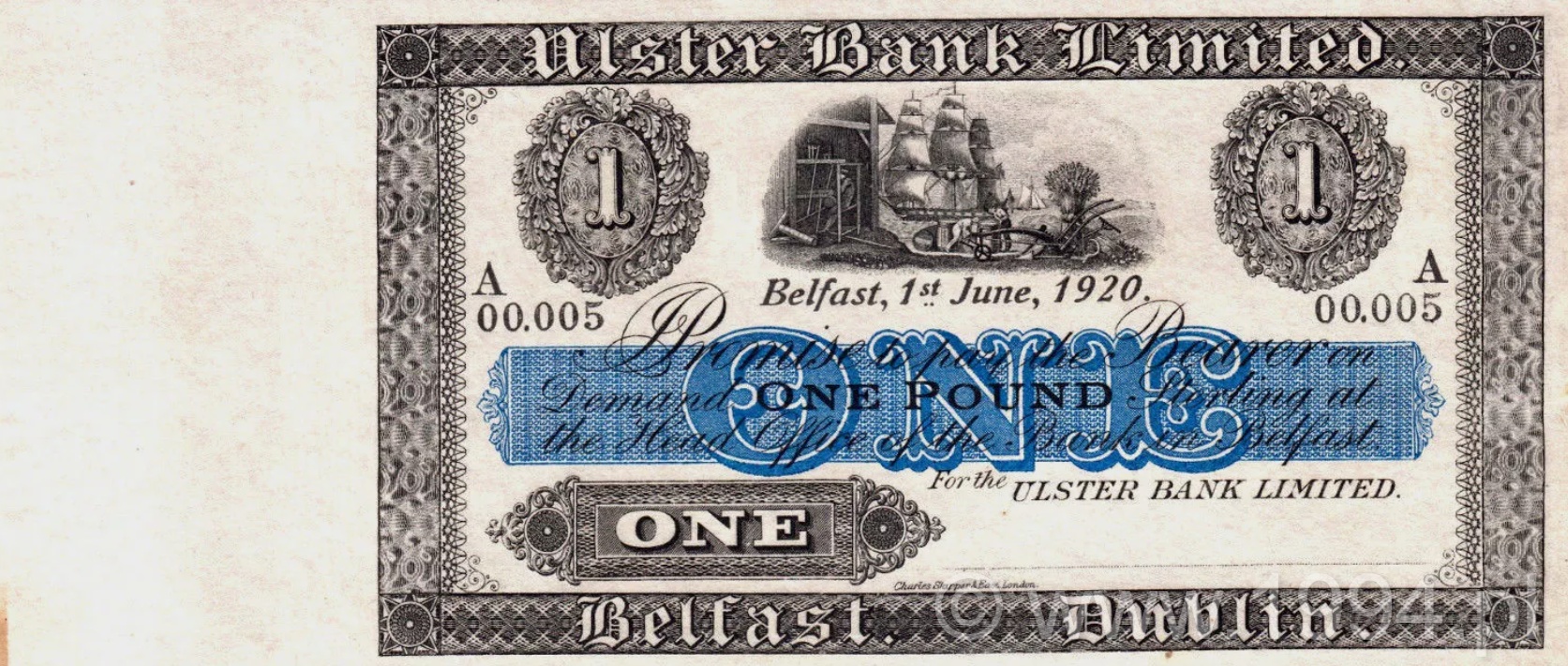Description and research notes
Archival proof for Ulster Bank Ltd., dated 1920. Printed by Waterlow & Sons, London, the note displays finely executed allegories and maritime motifs, reflecting both classical design and national symbolism in the early 20th century. The Waterlow imprint remains visible in the margin, a hallmark of genuine proofs.
Ulster Bank was founded in 1836 in Belfast by a group of prominent merchants and quickly became one of Ireland's leading private banks, expanding throughout Ulster and Dublin. Unlike the Bank of Ireland, which operated under a national charter, Ulster Bank issued its own banknotes, a practice common among Irish joint-stock banks until the mid-20th century. Its issues were tailored for regional circulation and carried strong local identity.
By the time this proof was prepared in 1920, Ulster Bank was a key player in Irish finance, serving commercial and agricultural clients during a period of political upheaval leading to the partition of Ireland in 1921. Notes of this era therefore represent not just currency but also a snapshot of Irish banking independence before consolidation into modern institutions.
Today Ulster Bank is part of NatWest Group, but its historic banknotes remain highly sought after for their artistry and their association with Ireland's complex financial and political history. Surviving proofs such as this are scarce, particularly in high grade. Graded PMG 64, this example is among the finer archival pieces known, combining rarity, artistry, and historical significance.
